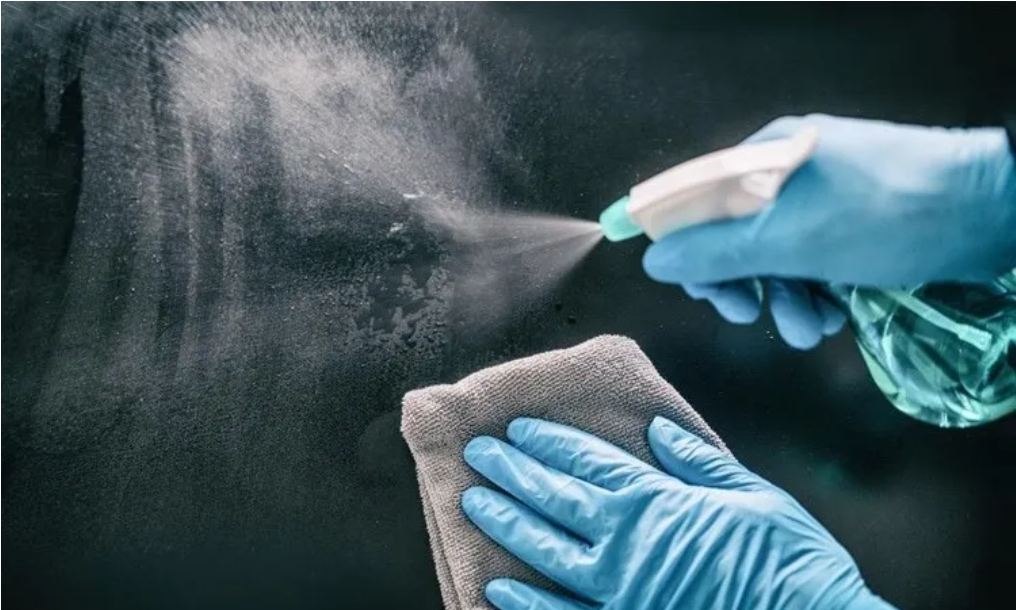Antimicrobial Polyurea Coatings With Rare Earth-Doped Nano-Zinc Oxide Particles
source:AZO MATERIALSThe Covid-19 pandemic has demonstrated the urgent need for antiviral and antimicrobial coatings for surfaces in public spaces and healthcare environments. Recent research published in October 2021 in the journal Microbial Biotechnology has demonstrated a rapid nano-Zinc oxide doped preparation for polyurea coatings that seeks to address this issue.The Need for Hygienic SurfacesAs demonstrated by multiple outbreaks of communicable diseases, surfaces are a source of pathogen transmission. The pressing need for rapid, effective, and non-toxic chemicals and antimicrobial and antiviral surface coatings has spurred innovative research in the fields of biotechnology, industrial chemistry, and materials science.Surface coatings with antiviral and antimicrobial action can reduce the risk of viral transmission and kill biostructures and microorganisms upon contact. They hinder the growth of microorganisms through cellular membrane disruption. They also improve properties of the surface, such as corrosion resistance and durability.According to the European Center for Disease Control and Prevention, 4 million people (about twice the population of New Mexico) globally per year acquire a healthcare-associated infection. This leads to around 37,000 deaths worldwide, with the situation especially bad in developing countries where people may not have access to proper sanitation and healthcare hygiene infrastructure. In the Western world, HCAIs are the sixth largest cause of death.Everything is susceptible to contamination by microbes and viruses – food, equipment, surfaces and walls, and textiles are just some examples. Even regular sanitation schedules may not kill every microbe present on surfaces, so there is a pressing need to develop non-toxic surface coatings that prevent microbial growth from occurring.In the case of Covid-19, studies have shown that the virus can stay active on frequently touched stainless steel and plastic surfaces for up to 72 hours, demonstrating the urgent need for surface coatings with antiviral properties. Antimicrobial surfaces have been used in healthcare settings for over a decade, being used to control MRSA outbreaks.Zinc Oxide – A Widely Explored Antimicrobial Chemical CompoundZinc oxide (ZnO) has potent antimicrobial and antiviral properties. The use of ZnO has been explored intensively in recent years as an active ingredient in numerous antimicrobial and antiviral chemicals. Numerous toxicity studies have found that ZnO is virtually non-toxic for humans and animals but is highly effective at disrupting the cellular envelopes of microorganisms.The microorganism-killing mechanisms of Zinc oxide can be attributed to a few properties. Zn2+ ions are released by partial dissolution of Zinc Oxide particles that disrupt further antimicrobial activity even in other microbes present, as well as direct contact with cell walls and the release of reactive oxygen species.Zinc Oxide antimicrobial activity is additionally linked to particle size and concentration: smaller particles and higher concentration solutions of Zinc nanoparticles have increased antimicrobial activity. Zinc Oxide nanoparticles that are smaller in size penetrate more easily into the microbial cell membrane because of their large interfacial area. Many studies, particularly into Sars-CoV-2 recently, have elucidated similarly effective action against viruses.Using RE-Doped Nano-Zinc Oxide and Polyurea Coatings to Create Surfaces with Superior Antimicrobial PropertiesThe team of Li, Liu, Yao, and Narasimalu has proposed a method for rapidly preparing antimicrobial polyurea coatings by introducing rare-earth-doped nano-Zinc Oxide particles created by mixing the nanoparticles with rare earth in nitric acid.The ZnO nanoparticles were doped with Cerium (Ce), Praseodymium (Pr), Lanthanum (LA), and Gadolinium (Gd.) Lanthanum-doped nano-Zinc Oxide particles were found to be 85% effective against P. aeruginosa and E. Coli bacterial strains.These nanoparticles also remain 83% effective at killing microbes, even after 25 minutes of exposure to UV light. The doped nano-Zinc Oxide particles explored in the study may show improved UV light response and thermal response to temperature changes. Bioassays and surface characterization also provided evidence that surfaces retain their antimicrobial activities after repeated use.Polyurea coatings also have high durability with less risk of peeling off surfaces. The durability of the surfaces coupled with the antimicrobial activities and environmental response of the nano-ZnO particles provide improvements to their potential for practical applications in a variety of settings and industries.Potential UsesThis research shows enormous potential for the control of future outbreaks and stopping the transmission of HPAIs in healthcare settings. There is also potential for their use in the food industry to provide antimicrobial packaging and fibers, improving the quality and shelf-life of foodstuffs in the future. Whilst this research is still in its infancy, it will no doubt soon be moving out of the laboratory and into the commercial sphere.
Post time: Nov-10-2021
